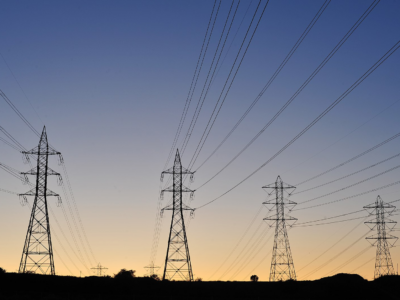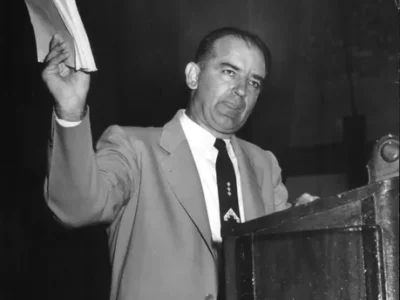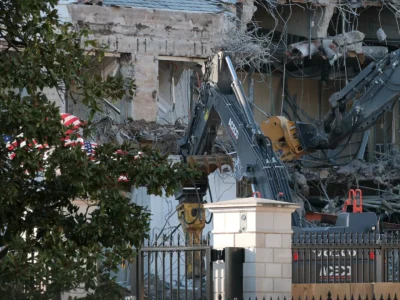What Happened to EPA Enforcement?
Enforcement efforts peaked long ago and have been in long-term decline. Trump will accelerate that.
According to a recent report by the Environmental Integrity Project, “During the first Trump Administration, EPA inspections, penalties, and the enforcement of environmental laws fell significantly, worsening a long-term decline in enforcement activity that began approximately twenty years ago. The numbers bear out this conclusion but raise three questions: What’s behind the long-term trend? Why has pollution generally continued to decline despite weaker enforcement? And how bad will things be under Trump II?
The Long-Term Decline in Federal Enforcement
In retrospect, George W. Bush presided over a golden age of environmental enforcement. Before the financial crisis, there were about 3200 staff in EPA’s Office of Enforcement and Compliance. Under Trump I, the number declined to 2400, but it rebounded only modestly under Biden, to about 2700. Declining staff levels efforts were reflected in
EPA sent markedly fewer cases to DOJ for civil actions in court. That number peaked at 327 in the first year of the Obama Administration declined precipitously during most of his Administration and was down to 81 when he left office. There was a bit of a bump under Biden, but by the time he left office, the number was down to an all-time low of 60.
The story for criminal enforcement is similar. There were 372 criminal enforcement actions in 2005. The number declined to 176 when Bush left office, bounced around under Obama but ended up at 183, hit a low of 108 under Trump I, and recovered only slightly under Biden. When Biden left office, there were 121 criminal actions, about a third of the peak under Bush.
EPA’s inspection actions have also gone down, but the pattern has been a little different. In 2013, there were 11,000 inspections under Obama, which fell to around 9500 in his final year. Prior to the pandemic, inspections were at about 8200 under Trump 1. The two worst pandemic years saw much lower inspection rates, but the number slowly recovered under Biden to 8500 in 2024. But that was till a lot lower than the level a decade earlier.
Why Has Air Pollution Declined Anyway Despite Low Enforcment Rates?
Some reasons for the decline in pollution could have been due to unrelated factors like the movement of manufacturing to China and the rise of fracking, which led to closures of many coal generation plants. Nevertheless, the empirical evidence is that federal air pollution laws have been a significant factor. But how can pollution laws have driven air pollution declines even though enforcement has gone down? The answer is that what really matters is whether firms comply with regulations, and EPA enforcement actions are only one reason for compliance.
To begin with, the numbers may exaggerate the significance of the enforcement decline. EPA may have become much more efficient in focusing its enforcement efforts on the most significant violations, getting more bang for the enforcement buck. The disconnect between trends in inspections and enforcement suggest that many inspections may result in informal resolutions that correct violations but are not included in the numbers. In addition, under Obama, there was an effort toward “Next Gen” compliance, based on the idea that regulations should be written in ways that will drive compliance, and this effort may well have born some fruit.
Moreover, EPA is not the only enforcer of federal pollution regulations. State governments also have enforcement authority. States vary in how much they care about the environment. Some, like Texas, may be fairly law, but others take pollution seriously and vigorously enforce regulations. Particularly under Democratic administrations EPA may be successful in pressuring laggard states to increase their efforts. In addition, federal law authorizes citizen suits to enforce pollution requirements, and organizations like Sierra Club have been active in this litigation.
Finally, the threat of enforcement is not the only reason that firms comply with regulations. Firms are required to report their emissions, which are publicly available, and it is not hard for environmental groups and ordinary citizens to determine whether a firm is complying. That information is of interest to the firm’s employees (who are themselves exposed to the pollution), local communities, and media. Consistent violations may draw the attention of consumers, investors, and lenders.
And What About Trump II?
Trump has been much more aggressive pursuing his goals in his second term, and we can expect that to hold true in terms of environmental enforcement. Trump plans huge cuts at EPA, touting efforts to cut EPA’s budget by 60%. I doubt that he will succeed in such draconian cuts, but he’s like to get some significant cuts, which could fall especially heavily on enforcement staff. He has already taken steps to hobble the Justice Department division that enforces environmental regulation.
One of Trump’s executive orders tells agencies not to enforce regulations running contrary to his policy goals. That includes all environmental regulations — especially air pollution regulations, given Trump’s desire to maximize production and use of fossil fuels. Indications so far are that enforcement is lower than ever under this Administration.
In short, don’t be surprised to see record low enforcement levels decline further under Trump. We may have the opportunity to see how polluters respond to near-zero levels of federal enforcement. The larger puzzle is the long-term decline in federal enforcement
Reader Comments
2 Replies to “What Happened to EPA Enforcement?”
Comments are closed.







I am heartbroken that we are not safeguarding the health of the public. Trump is a diabolical individual and I can’t wait to see him go.
EPA enforcement activities are primarily for political points. Most environmental regulations are delegated to the states and enforced by the states. Fairly comprehensive reporting requirements negate much of the need for routine inspections, except for the relatively few cheaters. Facility management held to strict standards for environmental compliance (permits to operate) which is reflected in performance reviews. Too many violations and you lose your job!